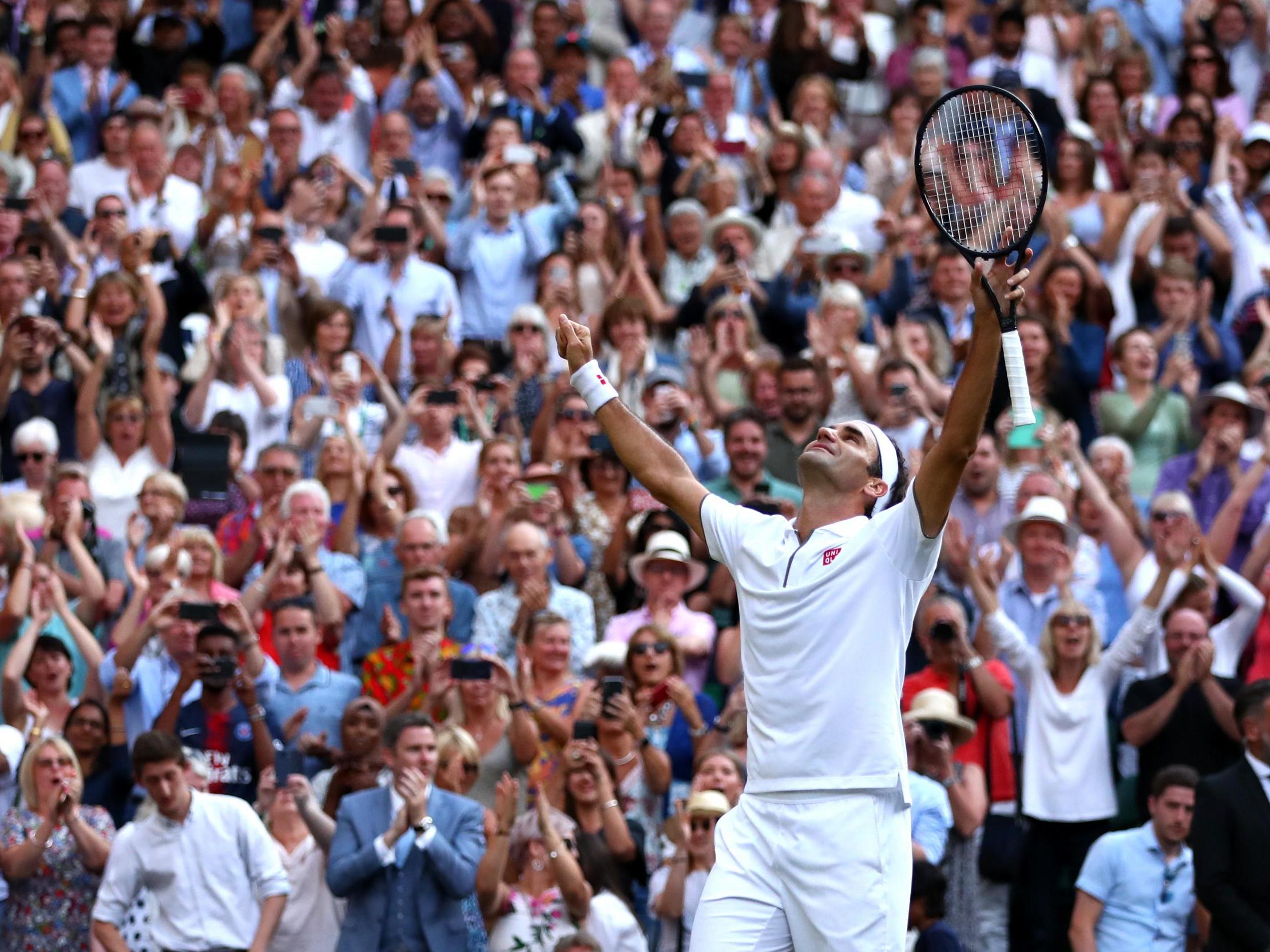Eleven years on from that famous defeat, Roger Federer has his revenge – so how did he beat Rafael Nadal?
After yet another titanic struggle between these two greats – the fourth of its kind at the All England Club – it was Federer who emerged triumphant following just over three hours of absorbing tennis


The last time Roger Federer and Rafael Nadal met here at Wimbledon, a dark gloom had descended as the Spaniard was crowned champion beneath a shower of flashing bulbs. It was an iconic moment for tennis, a match widely considered to mark the pinnacle of the sport.
There may have been no coronation this time around, no ethereal darkness to coat the occasion, but more than a decade on these two men still hold the ability to bring their sport to a breathless standstill.
After yet another titanic struggle between these two greats – the fourth of its kind at the All England Club – it was Federer who emerged triumphant from this semi-final clash following just over three hours of absorbing tennis, winning 7-6 1-6 6-3 6-4.
In the eleven years that have passed since that iconic, game-changing day in 2008, the two men have woven the richest of rivalries together. It is a tapestry of epic battles – 40 in total, fought out across the globe – that runs through two glorious decades. And as today’s meeting showed, the competitive edge that exists between these two men has not waned with the passing of time. It burns as brightly as ever, manifesting in a spectacle that left those present here on Centre Court humbled by what they had witnessed.
Rising as a crescendo with each passing set, Federer’s victory meant more than just a place in this year’s final. After the agony of that defeat in 2008 – as well as the more recent humiliation at Roland Garros – this was both sweet revenge and a timely reminder that the Swiss remains a force to be reckoned with on grass. Two years since his last win at Wimbledon, this was the performance he needed to show he remains capable of securing a record-breaking ninth title.
So how did he do it? How did he overcome a man who had so assertively consigned him to a three-set defeat in Paris just one month ago? And with an abundance of talent at the two players’ disposal – spinning, swirling forehands, inch-perfect serves, meticulous footwork – what made the difference in a match as finely balanced as this?
From the off, it became clear that the outcome of this semi-final was always going to be settled by the smallest of margins. The first set, in particular, was notable on account of how remarkably unremarkable it was. After 12 games, which swung almost idly from Nadal to Federer as they put their respective serves to good use, it seemed only natural that the first set would be decided by a tie-break. Here, it was the Swiss who drew first blood, sealing the set with a punched forehand winner.
In the second set, the Swiss offered little to suggest this would be his match for the taking. Quite the opposite. At 2-1, Federer was broken, precipitating a downward spiral in focus and form that handed momentum squarely in the Spaniard’s favour. Errors were beginning to creep into his game, whether in the form of a netted backhand or wayward forehand. At 5-1, Nadal saw out the frame as his opponent fired a limp baseline shot into the net. It seemed so out of character, so unlike the eight-time Wimbledon champion.
But it was in the third set that the balance swung, when Federer fine-tuned his performance to beat his opponent at his own game. The world No 3 had headed into this game looking to avoid the long, draining rallies which Nadal so welcomely embraces. But here Federer threw himself into such exchanges. The fifth game alone saw two marathon rallies – 23 shots and 25 shots in length respectively – that the Swiss emerged triumphant from both. He was patient in his strokes, unafraid to go toe-to-toe with his opponent who looked unsettled by Federer’s approach.
In the seventh game, at 19 shots, Federer clinched the point after yet another exhausting rally that had looked to be going Nadal’s way. Holding to love, it was confirmation of the Swiss’ surging confidence.
At the net – another core component to Nadal’s game – Federer similarly stamped his authority. Indeed, the all-important break of the third set came after a forecourt duel, Federer picking out the space to Nadal’s right following a rapid one-two over the white cord. His overhead smashes, too, inflicted maximum damage – excluding one overcooked effort late on in the match.
And on his backhand, the decision to hit fewer sliced shots stripped Nadal of the platform he needed to launch his devastating attacks. Instead, Federer was more regularly hitting through his backhand, that graceful right-armed sweep around the shoulder coming into action. The result? Nadal was forced further behind baseline where the focus was on simply getting the ball back.
Come the fourth set, then, it was Federer in the ascendancy – and by the third game, the No 2 seed had yet another break. At this stage, it was his match to lose. Nadal continued to fight for every point, to press and probe in search of a breakthrough. But Federer’s change in style, and the growing strength of his backhand, meant that there was no way through. The quality was increasing, as was the tension, but all throughout this final set it was the Swiss who looked more assured, more composed, more in control of proceedings. And so after the Spaniard saved two match points, it was left to Federer to serve for the win, saving break point before wrapping up the match after a late flurry in resistance from his rival.
Looking back on that memorable evening in 2008, plenty has changed since. But for all their shared glory and riches, this was a match where all of that became irrelevant. At its core, this was simply another thrilling collision between two of the greatest players to have graced the game, both striving and struggling to walk away as victor. So as our attention turns to Sunday’s final between Federer and Novak Djokovic, let’s not forget this clash for what it was: the latest spine-tingling chapter from a rivalry that has already passed into legend.
Join our commenting forum
Join thought-provoking conversations, follow other Independent readers and see their replies
Comments